- 本月热门
-
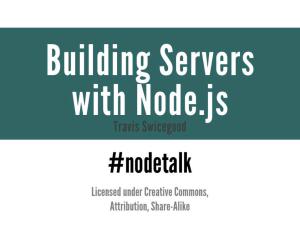 Building Servers with Node.js(用NodeJS写服务器程序) by Travis Swicegood
Building Servers with Node.js(用NodeJS写服务器程序) by Travis Swicegood -
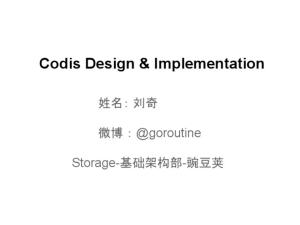 Codis Design & Implementation(如何扩展Redis集群) by 刘奇@豌豆荚
Codis Design & Implementation(如何扩展Redis集群) by 刘奇@豌豆荚 -
 猿题库客户端的技术细节(排版引擎与版本控制) by 唐巧
猿题库客户端的技术细节(排版引擎与版本控制) by 唐巧 -
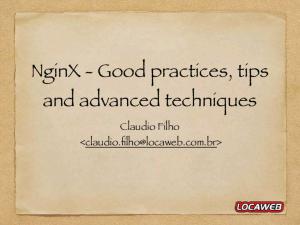 NginX - Good practices, tips and advanced techniques(Nginx最佳实践,应用和高级技巧) by Claudio Filho
NginX - Good practices, tips and advanced techniques(Nginx最佳实践,应用和高级技巧) by Claudio Filho -
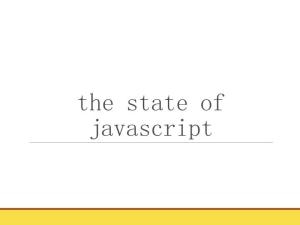 The state of javascript(ES2015新特性) by domenic
The state of javascript(ES2015新特性) by domenic -
 黑客眼中的⼯工控4.0—工控系统安全威胁与应对探索 by Kimon
黑客眼中的⼯工控4.0—工控系统安全威胁与应对探索 by Kimon -
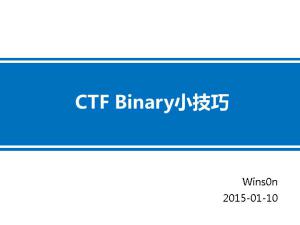 CTF Binary小技巧 by WinsOn
CTF Binary小技巧 by WinsOn -
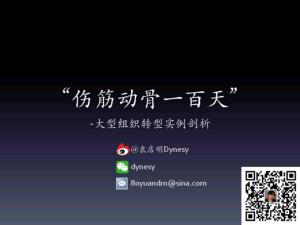 “伤筋动骨一百天”‐大型组织转型实例剖析 by 袁店明
“伤筋动骨一百天”‐大型组织转型实例剖析 by 袁店明 -
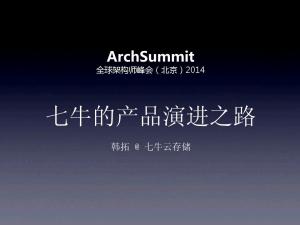 七牛的产品演进之路 by 韩拓
七牛的产品演进之路 by 韩拓 -
 运营商安全那些事-从攻击者的角度分析检查及实践过程中产生的安全隐患 by 何雄伟
运营商安全那些事-从攻击者的角度分析检查及实践过程中产生的安全隐患 by 何雄伟
加收藏
How Change Happens(如何拥抱变化,鼓励创新) by Openlab
第1页
How Change HappensThe Openlab Change Model
Openlab Workshop
http://openlabworkshop.wikispaces.com
Washington, DC. December 1-2, 2015
Michael Peter Edson @mpedson
CLIR/Open Knowledge
http://openlabworkshop.wikispaces.com
Washington, DC. December 1-2, 2015
Michael Peter Edson @mpedson
CLIR/Open Knowledge
第2页
Galleries, Libraries, Archives, and Museums (GLAMs)have some of the most important missions in society *
Put the tools of knowledge creation into more hands
Share the joy and meaning of artistic and cultural exploration
Deepen engagement with the challenges that face our species
* These slides apply to all cultural/memory/knowledge institutions - - and many other kinds of organizations as well
第3页
And technology providesthem with new opportunities to dramaticallyincrease the scale and impact their work…
第4页
…But change is hard, and GLAMs struggle torecognize and exploit these opportunities.
第5页
Some institutions struggle to experiment andbegin the process of digital engagement.
第6页
Others struggle to innovate andbegin the process of digital transformation.
第7页
And others struggle to sustain innovationand deepen the impact of their programs.
第8页
Everyone struggles with disruption and change.
第9页
We’re often told that change takes time,and that things will be differenta little farther down the road.
But how much farther? Can we do something nowto make change happen faster?
But how much farther? Can we do something nowto make change happen faster?
第10页
It’s difficult to predict what will drive change in an industry—or even in a single office—but some patterns seem clear.
第11页
Pattern #1: Change flows
Pattern #2: Top-down and bottom-up
Pattern #3: Labs are an under-utilized resource
Pattern #4: Think big, start small, move fast
Pattern #5: Use the power of conveners
Pattern #2: Top-down and bottom-up
Pattern #3: Labs are an under-utilized resource
Pattern #4: Think big, start small, move fast
Pattern #5: Use the power of conveners
The Openlab Change Model
第12页
Pattern #1: Change flows
Change doesn’t happen at the same time across an entire industry, it flows across the landscapefrom organization to organization.
第13页
New ideas can come from anywhere.
第14页
And new ideas take root and grow when organizations can see them, understand them,and take action on them.
We’ve heard about this.
We understand this.
We can do this.
We can test this.
We can adapt this.
We can see the effects of this.
We have a sense of urgency.
We understand this.
We can do this.
We can test this.
We can adapt this.
We can see the effects of this.
We have a sense of urgency.
第15页
Innovative organizations are prepared to see, understand, and act upon new ideasquickly, without a lot of outside help.
We’ve heard about this.
We understand this.
We can do this.
We can test this.
We can adapt this.
We can see the effects of this.
We have a sense of urgency.
We understand this.
We can do this.
We can test this.
We can adapt this.
We can see the effects of this.
We have a sense of urgency.
第16页
We’ve heard about this.
We understand this.
We can do this.
We can test this.
We can adapt this.
We can see the effects of this.
We have a sense of urgency.
We understand this.
We can do this.
We can test this.
We can adapt this.
We can see the effects of this.
We have a sense of urgency.
They can see, understand, and actbecause they have these capabilities.
第17页
Early adopters are influenced by the successes and failures of the innovators. Early adopters need time to gain confidence and develop the skill and resources to act.
We’ve heard about this.
We understand this.
We can do this.
We can test this.
We can adapt this.
We can see the effects of this.
We have a sense of urgency.
We understand this.
We can do this.
We can test this.
We can adapt this.
We can see the effects of this.
We have a sense of urgency.
第18页
Early majority organizations follow the early adopters. They need even more time, support,and resources before they will take action.
We’ve heard about this.
We understand this.
We can do this.
We can test this.
We can adapt this.
We can see the effects of this.
We have a sense of urgency.
We understand this.
We can do this.
We can test this.
We can adapt this.
We can see the effects of this.
We have a sense of urgency.
第19页
Once you get the innovators, early adopters, and early majority on board you’ve got critical mass, and change across an entire industry is possible.
第20页
This is called an innovation adoption curve…
C H A N G E
第21页
This is called an innovation adoption curve…And it’s a well studied phenomenon.
C H A N G E
第22页
It’s not perfect, but it seems to explain GLAMs(and a lot of other industries) pretty well.
C H A N G E
第23页
Each group differs in its ability to see,understand, and act upon new ideas.
Social connections with colleagues—We’ve heard about this
In-house knowledge and resources—We understand this and can do it
Idea fits with needs & systems—We can adapt this to our needs
Idea is conducive to prototyping—We can test this and see the results
A sense of urgency—this is perhaps the most critical factor!
In-house knowledge and resources—We understand this and can do it
Idea fits with needs & systems—We can adapt this to our needs
Idea is conducive to prototyping—We can test this and see the results
A sense of urgency—this is perhaps the most critical factor!
第24页
It’s important to work across the entire spectrum to prepare each group for the arrival of new ideas according to their needs and abilities.
C H A N G E
Develop social connections with colleagues | Build in-house knowledge and capacity
Foster a sense of urgency
Foster a sense of urgency
第25页
This is not about the size of an organization.It’s about the organization’s readiness to see, understand, and act upon ideas in their own context.
第26页
To accelerate change using this model, firstfigure out how far an idea has movedacross the curve from left to right.
Stuck here
第27页
Stuck here
Then work to help the next cohort of organizations build the awareness, capacity, and sense of urgency necessary to put the idea into action.
Apply
Resources
Here
Not
Here
(yet)
第28页
Sometimes this area is called the chasm because it’s notoriously difficult to get new ideas seen, understood, and acted upon by the early majority…
第29页
But once you cross the chasm you’ve got halfof all organizations on board and ongoingadoption is more likely.
第30页
Recommendation
Use the innovation adoption model to investresources where they’ll have the greatest impact.
Increase everyone’s ability to see, understand,and act upon new ideas that are meaningful to their mission, context, and capacity.
Focus energy on driving change across the landscape.
Use the innovation adoption model to investresources where they’ll have the greatest impact.
Increase everyone’s ability to see, understand,and act upon new ideas that are meaningful to their mission, context, and capacity.
Focus energy on driving change across the landscape.
第31页
Pattern #2: Top-down and bottom-up
第32页
Change is easier when the peopleat the top are leading it.
第33页
But in this day-and-age it’s not enough to just lead from the top: leaders and innovatorsare everywhere.
第34页
Many visionaries and change makers are mid-career managers and practitioners: it’s easy for themto become isolated in small organizations, or lost within large ones.
第35页
Often, the best people are among our ‘audience’—people who work outside our institutions, volunteering their time and expertise for the greater good.
第36页
And many smart creatives* are trappedat the bottom of organizations, with norecognition, visibility, or resources.
* A term used by Eric Schmidt and Jonathan Rosenberg in How Google Works (2015)
第37页
Even directors and their boards need support.
第38页
To drive change across an industry, individualsat all levels need to be recognized, trained,and empowered to lead.
第39页
Recommendation
To drive change, focus attention on the top (including board and donors), and middle, and bottom of organizations, as well as non-staff participants.
At each level, consistently recognize and celebratethe kinds of behaviors and outcomesyou want to see more of.
Spread news of success, and pattern the behavior of top performers, whoever and wherever they are.
Train and communicate relentlessly at all levels,in small groups and at scale.
To drive change, focus attention on the top (including board and donors), and middle, and bottom of organizations, as well as non-staff participants.
At each level, consistently recognize and celebratethe kinds of behaviors and outcomesyou want to see more of.
Spread news of success, and pattern the behavior of top performers, whoever and wherever they are.
Train and communicate relentlessly at all levels,in small groups and at scale.
第40页
Pattern #3: Labs are an under-utilized resource
第41页
There are over 70 “labs”in the cultural industries.
第42页
These labs are vital, creative, and innovative,but they tend to work in isolation.
第43页
…And this undermines our ability to solve big problems and spread new ideas.
第44页
In addition, the cutting edge work of labs is not always useful to the small and mid-sized institutions that serve millions of communities.
第45页
Recommendation
Bring labs together to network andcollaborate on shared goals.
Establish annual challenge/stretchgoals for the network of labs.
Establish lab programs that directly servethe needs of small and mid-sized organizations—and raise the bar for established innovators.
Bring labs together to network andcollaborate on shared goals.
Establish annual challenge/stretchgoals for the network of labs.
Establish lab programs that directly servethe needs of small and mid-sized organizations—and raise the bar for established innovators.
第46页
Pattern #4:Think big, start small, move fast
第47页
Big goals are important. Society needs us to be successful, at scale.
But how do big things get done?
But how do big things get done?
第48页
Big things are rarely achieved in one giant step,but small, incremental steps don’t necessarilyadd up to big results either.
第49页
…And while patience is a virtue and some things do take time, much of our work is overly cautious, tentative, and slow.
第50页
Sometimes big goals are easier to accomplish than small ones. Big goals force you to re-think what is possible, and big thinking attracts the kinds of communities you need to succeed.
第51页
“Work on stuff that matters,” said Tim O’Reilly.
Do that, but do it now…
Do that, but do it now…
http://radar.oreilly.com/2009/01/work-on-stuff-that-matters-fir.html
第52页
Break big goals into small, manageable pieces. Short-term, achievable goals aligned towards a big vision create a sense of urgency and accelerate learning.
第53页
But beware of incrementalism—small stepsthat feel like progress, but don’t add upto something bigger.
第54页
Speed—speed of decision making, speed of execution, speed of learning—is critical.
第55页
Recommendation
“Work on stuff that matters.”
Break large, ambitious goals into smallersub-projects, and execute them with speed.
Beware of incrementalism.
More on Think big, start small, move fast
http://www.slideshare.net/edsonm/think-big-start-small-move-fast
“Work on stuff that matters.”
Break large, ambitious goals into smallersub-projects, and execute them with speed.
Beware of incrementalism.
More on Think big, start small, move fast
http://www.slideshare.net/edsonm/think-big-start-small-move-fast
第56页
Pattern #5:Use the power of conveners
第57页
What should we work on? What’s important?What is even possible?
第58页
Conveners—organizations and individuals who bring people together around certain ideas—have a lot of power to set the agenda and drive change.
第59页
But many established conveners are tied down with preexisting relationships, business models, and constituents that are wary of change.
第60页
New conveners are always emerging, but many struggle to reach established audiences at scale.
第61页
New kinds of conveners are needed who have the authority and reach of established organizations, and the freedom and agility necessary to experiment and drive change.
第62页
Recommendation
Build on the convening power and authority of established organizations.
Create new workgroups far enough inside established organizations to have reach and legitimacy, but far enough outside to have operational autonomy and the freedom to experiment.
Use the power of conveners to set an agenda and support change over the long term.
Build on the convening power and authority of established organizations.
Create new workgroups far enough inside established organizations to have reach and legitimacy, but far enough outside to have operational autonomy and the freedom to experiment.
Use the power of conveners to set an agenda and support change over the long term.
第63页
Pattern #1: Change flows
Pattern #2: Top-down and bottom-up
Pattern #3: Labs are an under-utilized resource
Pattern #4: Think big, start small, move fast
Pattern #5: Use the power of conveners
Pattern #2: Top-down and bottom-up
Pattern #3: Labs are an under-utilized resource
Pattern #4: Think big, start small, move fast
Pattern #5: Use the power of conveners
The Openlab Change Model
第64页
Thank you!
Some pictograms © Khoon Lay Gan, via: http://www.123rf.com/profile_leremy
(others are remix/mashup by @mpedson)
(others are remix/mashup by @mpedson)
The Openlab Workshop: http://openlabworkshop.wikispaces.com
@mpedson
